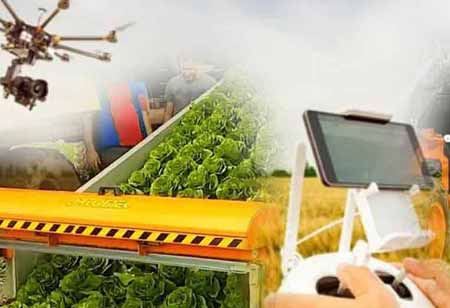Thank you for Subscribing to Agri Business Review Weekly Brief
Agrochemical Trends Diving Farming Practices
Agrochemical manufacturers are constantly innovating their formulations to improve performance and stability in fertilizers,

By
Agri Business Review | Monday, November 20, 2023
Stay ahead of the industry with exclusive feature stories on the top companies, expert insights and the latest news delivered straight to your inbox. Subscribe today.
Fertilizer, growth agents, and crop protection products continue to be improved with new formulations from agrochemical manufacturers.
FREMONT, CA: Agrochemical manufacturers are constantly innovating their formulations to improve performance and stability in fertilizers, growth agents, and crop protection products. This is exacerbated by the agricultural sector's shift toward sustainability and automation, which compels agrochemical companies to develop novel, future-oriented solutions such as drone-compatible pesticide concentrates, environmentally friendly capsules, and sustainable formulations based on plant extracts.
Agrochemical formulations with multiple active ingredients boost farmers' efficiency significantly. This approach, which combines several active ingredients in a single product, eliminates the need for multiple applications, saving time and money. Farmers can effectively target multiple pests in one go by combining diverse, active ingredients into a unified formulation, streamlining the process, and conserving resources.
Creating multi-active ingredient products is far more complicated than simply combining various crop protection agents. Each active ingredient has different pH and moisture needs, and some may interact negatively with others. Novel techniques such as encapsulation, oil dispersion (OD), and water-dispersible granules (WG) are required to prevent chemical degradation in multi-active products.
ODs improve the stability of moisture-sensitive ingredients while also acting as enhancers to boost the effectiveness of other compounds. As a result, agrochemical manufacturers are gravitating toward OD formulations. This shift, however, necessitates a separate development phase. Encapsulation has long been used to improve stability, combine incompatible compounds, and control active ingredient release based on environmental conditions.
Despite their advantages, many encapsulation methods use non-biodegradable synthetic polymers, which leave microplastics in the environment. The industry is currently investigating biodegradable alternatives. Microbial formulations containing live microbes for pest control and plant growth stimulation are relatively new, but they show promise as a sustainable alternative to conventional agrochemicals. However, challenges remain in commercializing these formulations, particularly in achieving year-long stability in various environmental contexts.
Continuous refinement is required to achieve effective microbial formulations until the desired performance levels are achieved. Due to geographical differences in climate, soil chemistry, ecology, and regulations, all of which impact the viability of a given formulation, localization emerges as a critical concept within the agrochemical sector.
Agrochemical product development for different global regions necessitates meticulous development and testing to ensure safety, efficacy, and regulatory compliance. Drones make precision agriculture possible by monitoring and responding to crop variations in small areas. These instruments allow for precise assessments of crop health variability and the targeted application of agrochemical solutions such as growth agents or crop protection.
Developing agrochemical solutions for drone use necessitates the development of high-concentration, viscous products with low mass. These formulations are frequently non-Newtonian fluids, which adds to their complication. Botanical pesticides derived from plant extracts have advantages over synthetic counterparts, including lower environmental impact, increased specificity, and lower persistence in the environment.
Biochemical resources are abundant, but extracting and manipulating unfamiliar compounds can be challenging, especially when ensuring their stability within base formulations. Especially when visual stability assessments are used, balancing stability with cost-effectiveness is difficult.





